Modern Garden Styles: Top 8 Trends for 2025
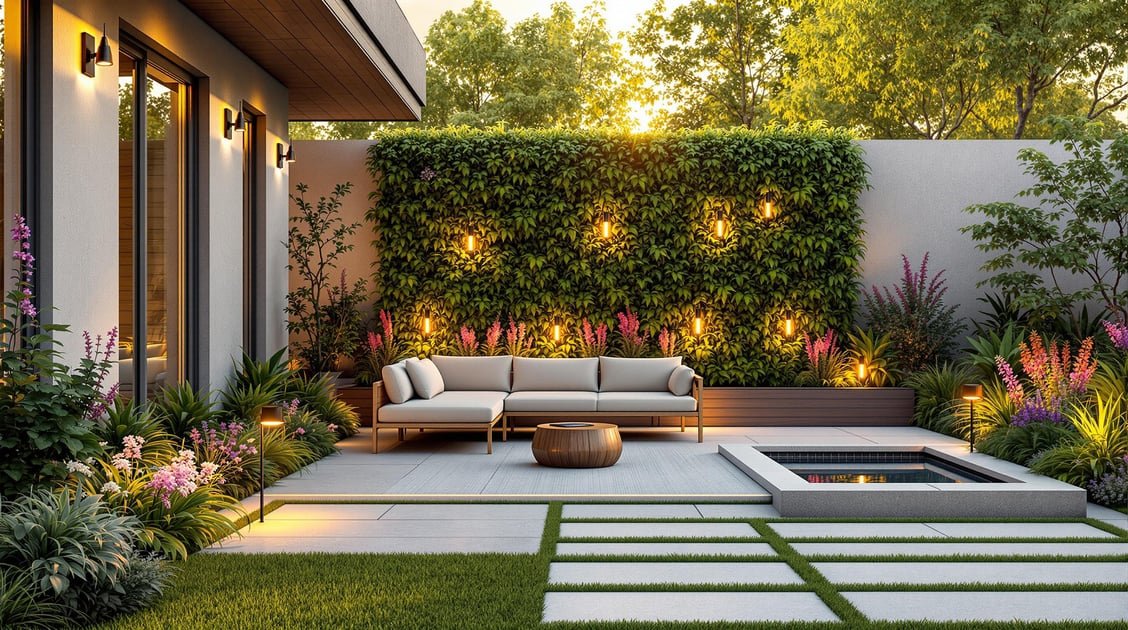
Gardens in 2025 blend smart tech, eco-conscious practices, and personal well-being. From AI design tools to weather-ready plants, here's how outdoor spaces are evolving to be more functional and sustainable.
Key Trends:
- AI-Powered Garden Design: Tools like AIGardenPlanner simplify planning with climate-based plant recommendations and custom designs.
- Vertical Gardens: Perfect for small spaces, they save water and improve air circulation.
- Smart Irrigation: Cuts water waste by up to 50% with soil sensors and weather integration.
- Food Gardens: Combine edible and ornamental plants for beauty and practicality.
- Nature-Connected Design: Focus on native plants, wildlife-friendly areas, and serene spaces.
- Weather-Ready Plants: Choose drought-tolerant and resilient species to handle climate shifts.
- Eco-Friendly Materials: Use recycled or renewable materials like bamboo and permeable surfaces.
- Garden Tech Integration: Smart sensors, automated systems, and hydroponics simplify upkeep.
These trends prioritize sustainability, efficiency, and creating spaces that are enjoyable year-round. Whether you’re designing a small urban garden or a sprawling yard, these ideas help you make the most of your space while reducing environmental impact.
Modern Garden Design 2025 | 5 Sleek Trends to Future-Proof ...

1. AI Design Tools for Gardens
AI-powered tools are changing the way gardens are designed, making it easier for both homeowners and professionals. One standout tool, AIGardenPlanner, allows users to upload photos of their garden and instantly receive design plans. With over 50 garden styles to choose from - like Japanese Zen, Mediterranean, and Modern Minimalist - it helps users visualize various options tailored to their needs.
What makes AIGardenPlanner even more useful is its climate-based plant recommendations. According to the company:
"Our AI Plant Advisor is a smart recommendation system that creates personalized garden plans based on your location, climate zone, gardening goals, and preferences. It provides detailed growing guides, maintenance schedules, and care instructions for each recommended plant, ensuring your garden thrives all year round."
A recent survey conducted in March 2024 among 500 AIGardenPlanner users showed a 40% improvement in plant growth success when the AI Plant Advisor was used.
Here’s how the tool works to deliver expert designs without requiring prior design knowledge:
| Step | Action | Outcome |
|---|---|---|
| Upload | Add a photo of your current garden | AI analyzes the space |
| Style Selection | Pick from over 50 garden styles | Sets the design direction |
| Customization | Adjust preferences for similarity | Fine-tunes the generated design |
| Implementation | Download high-resolution plans | Ready for execution |
This streamlined process makes garden design accessible and effective, even for beginners.
2. Space-Saving Vertical Gardens
Vertical gardens are changing the game for small-space gardening, especially in urban areas. They make the most of limited space while offering practical and eco-friendly solutions.
Rebecca Bullene, founder of Greenery NYC, explains the impact of vertical gardens:
"One of the benefits of living walls is that they allow us to incorporate an abundance of plants inside without things getting too crowded... Living walls typically will have hundreds of plants in them - it would take up too much room to put those on the floor, you'd have nowhere to walk."
But it’s not just about saving space. Vertical gardens are also efficient. Carrie Spoonemore, co-creator of Park Seed's From Seed to Spoon app, points out:
"Vertical gardening saves on water usage because water dripping from the top layer will also water plants below."
Take Stephanie Rose’s 3-tier raised bed system, for example. It added 40 ft² of growing space while creating zones with different sun exposures.
If you’re considering a vertical garden, here are some key factors to keep in mind:
| Element | Consideration | Recommendation |
|---|---|---|
| Structure | Weight capacity | Ensure walls and supports can handle the load |
| Soil | Quality | Use high-quality potting mix with slow-release fertilizer |
| Plants | Root system | Choose shallow-rooted plants like herbs and greens |
| Irrigation | Water distribution | Install drip systems for even watering |
| Materials | Sustainability | Use upcycled materials for eco-friendly designs |
Brandy Hall, CEO of Shades of Green, emphasizes the importance of reusing materials:
"By utilizing salvaged materials to create trellises and arbors, you reduce waste, conserve resources, and bring new life to something that would have otherwise been destined for the landfill."
Vertical gardens also help prevent plant diseases. Better air circulation reduces common issues, and the setup makes maintenance and harvesting much easier. For modern gardeners, they’re a smart, space-efficient solution.
🚀 Ready to Reinvent Your Garden?
Join thousands of homeowners who have transformed their gardens using our AI design tool. Upload one photo to explore endless possibilities.
Get your AI garden designs →3. Smart Irrigation Systems
Smart irrigation systems are changing the way gardens are watered, delivering precise amounts of water to plants while reducing water usage by 30–50%. These systems use advanced technology to optimize water delivery.
"We analyze cloud-sourced soil data, crop type, and sunlight exposure to design individualized watering schedules for every garden zone."
Traditional irrigation in the U.S. consumes about 9 billion gallons of water daily, with nearly half of it wasted. Smart irrigation systems tackle this issue with the following components:
| Component | Function | Benefit |
|---|---|---|
| Soil Moisture Sensors | Tracks ground water levels | Prevents overwatering |
| Weather Integration | Monitors local conditions | Adjusts for rain forecasts |
| Smart Controllers | Manages watering zones | Customizes irrigation |
| Mobile App Control | Allows remote management | Enables real-time changes |
| Leak Detection | Checks system integrity | Reduces water waste |
Homeowners can save $100–$300 per year and cut long-term costs by 20–50%. While the initial cost ranges from $500 to $1,500, many municipalities offer rebates between $50 and $300 to encourage adoption.
"It was an extraordinary market opportunity. There are 80 million lawns in the United States, and this is an innovative technology that not only saves money but dramatically reduces the amount of water [a] consumer uses."
When choosing a system, consider features like:
- Automatic skipping of watering during rain
- Multiple sensors for soil moisture, temperature, and humidity
- Apps that allow easy remote control
- Durable, weather-resistant components for outdoor use
Companies like Irrigreen have already saved around 200 million gallons of water. While these systems can cost $2,000 to $5,000 depending on property size and sprinkler needs, the water savings and reduced environmental impact make them a smart choice for eco-conscious gardeners.
4. Food Gardens That Look Good
Foodscaping is gaining popularity as a way to combine practicality with aesthetics. This approach blends edible plants with ornamental ones, creating gardens that are both productive and visually appealing. Much like smart irrigation systems and vertical gardening, food gardens in 2025 emphasize designs that serve multiple purposes.
| Plant Type | Visual Appeal | Edible Component |
|---|---|---|
| Black Aronia | Spring blossoms, fall foliage | Berries packed with antioxidants |
| Purple Basil | Deep burgundy leaves | Fragrant, flavorful herb |
| Blue-Green Cabbage | Sculptural, textured leaves | Nutritious cabbage heads |
| Nasturtiums | Bright, colorful flowers | Edible blooms and leaves |
| Golden Sage | Variegated, striking foliage | Culinary herb |
To make the most of your space and enhance the garden's look, plant in colorful blocks instead of traditional rows. This not only optimizes space but also creates a striking visual impact.
"There is no need for horticultural segregation; you can have an eclectic mixing of edibles and ornamental plants, and it actually makes for a tougher and healthier garden with less need for pesticides and fungicides." - Christina Salwitz
For a garden that looks appealing year-round, follow these tips:
- Define Your Space: Use decorative borders like brick or granite to frame your garden neatly.
- Layer Your Plants: Arrange plants in triangular shapes, placing taller varieties on trellises and using low-growing herbs as ground cover.
- Fill the Gaps: Plant fast-growing crops like radishes to fill empty spaces and maintain visual interest.
When planning, group plants with similar water and sunlight needs together. This simplifies upkeep and creates harmonious garden zones. Also, think about each plant's mature size, texture, and how its colors change with the seasons.
Food gardens show that you don’t have to choose between beauty and functionality - they offer both at once.
sbb-itb-4d6a8dd
5. Nature-Connected Design
Nature-connected garden design in 2025 focuses on creating outdoor spaces that bring together people, plants, and wildlife to promote mental wellbeing. By combining modern tools like advanced irrigation systems and AI design with the timeless beauty of nature, this approach offers a harmonious blend of innovation and natural charm. A good starting point? Select plants that thrive in your local environment.
Native plants and their cultivars, often called "nativars", are gaining traction. Andrew Jager, Marketing Manager for Walters Gardens (Proven Winners Perennials), highlights this growing trend:
"From the industry perspective, native plants and the conversation about the utility of native plants continues to be a hot topic. We probably get the most requests from our customers for literature, messaging, and information on this topic."
| Design Element | Purpose | Recommended Features |
|---|---|---|
| Quiet Spaces | Mental wellbeing | Meditation corners, reading nooks |
| Wildlife Areas | Biodiversity | Native plant clusters, pollinator gardens |
| Water Features | Sensory experience | Natural pools, rain gardens |
| Plant Selection | Sustainability | Native species, drought-tolerant varieties |
Beyond plant selection, thoughtful design features can make your garden a true retreat. Cameron DePaola, Owner and Landscape Designer at Riverside Group LLC, shares his perspective:
"From secluded meditation corners to yoga decks and spa-like water features, these areas are designed to be calm, private retreats within the broader landscape."
Another key aspect is embracing a more natural aesthetic. Megan Wade, Founder of Fieldwork Design Group, notes the shift in preferences:
"I feel like people are more willing to accept the aesthetics that may be a little less tidy looking... Most people have decided that, if there's lawn, there can be some clover and that's ok... our aesthetic lens has evolved, and now, more of us are able to appreciate this different kind of beauty."
Here are some ways to bring nature-connected design into your garden:
- Add sensory zones with fragrant plants, soft lighting, and the soothing sound of water.
- Create wildlife corridors to link garden spaces and encourage the movement of birds and insects.
- Use materials like local stone, sustainable wood, and permeable surfaces to blend with the environment.
Jo Thompson, a garden designer based in the U.K., stresses the importance of considering the local environment:
"People are cottoning on to the idea of place, and how a garden should sit within its location comfortably... Think loose, relaxed plantings that are a haven for the birds and the bees, as well as the humans who are the custodians of the garden."
You can also transform underused spaces like driveways, rooftops, or parking strips with native plants and pollinator-friendly gardens. A nature-connected garden isn't static - it changes with the seasons, supporting wildlife year-round while keeping the space visually engaging throughout the year.
6. Weather-Ready Plants
Selecting plants that can handle shifting weather patterns is becoming more important as climate unpredictability increases. The USDA Plant Hardiness Zone Map divides North America into 13 zones based on the average lowest winter temperatures, ranging from -60°F to 70°F.
Andy Siekkinen, a botanist and grower near San Diego, highlights the need to rethink landscapes to prepare for changing climates:
"Here in Southern California, it has become well-accepted we need to adjust our landscapes to be better suited for not only our current climate, but also the climate that will be our future, and this actually broadens the possibilities of what our gardens and yards can look like."
Research supports this shift, with recent trials showcasing drought-tolerant plants that retained their visual appeal while requiring less water.
| Plant Characteristic | Benefits | Uses |
|---|---|---|
| Native Species | Naturally suited to local conditions, supports wildlife | Foundation plantings, natural gardens |
| Thick/Leathery Leaves | Better drought resistance, reduced water loss | Sunny borders, exposed areas |
| Extensive Root Systems | Improved resource uptake, added stability | Slopes, erosion-prone areas |
| Aromatic Resins | Protects against heat and moisture loss | Mediterranean-style gardens |
Dean Dietrich, a horticulturist at Lewis Ginter Botanical Garden in Richmond, Virginia, shares his insights:
"When fully established, it handles heavy clay soils and doesn't skip a beat even in hot, humid summers and unpredictable winters."
To build a garden that can thrive in varying conditions, consider these tips:
- Add organic matter to enhance soil structure.
- Opt for native plants that thrive in your region.
- Check AHS Heat Zone ratings to ensure plants can handle your area's temperatures.
- Choose slow-growing trees with dense wood for durability.
Strategic planting can go beyond just looks. For example, placing a tree on the west side of your home can cut energy costs by up to 3% within five years.
🎨 Visualize Your Dream Garden Today!
Transform any outdoor space into a professional landscape design in minutes. Just upload a photo, choose your style, and let our AI do the rest.
Start your garden transformation now →7. Eco-Friendly Materials
Eco-friendly materials are reshaping modern garden design by blending sustainability with style. These materials align perfectly with trends like climate-conscious planting and efficient garden technologies.
According to VERGER Group: "The landscape of sustainable building materials in 2024 is characterized by innovation, performance, and a holistic approach to environmental impact".
| Material Type | Environmental Benefits | Best Applications |
|---|---|---|
| Recycled Plastic Lumber | Reduces waste, highly durable | Decking, fencing, furniture |
| Recycled Glass | Contains up to 80% recycled content | Countertops, decorative features |
| Low-Carbon Concrete | Cuts carbon footprint by 80% | Pathways, foundations |
| Bamboo | Grows up to 3 ft/day, renewable | Structures, screens, furniture |
Permeable surfaces are another great option, helping to manage stormwater while adding aesthetic value. Lyngso Garden Materials highlights this approach: "Sustainable landscaping creates and maintains a landscape that is regenerative, follows practices that offset any negative environmental impact, and has the ability to contribute to the health of its communities".
Some standout sustainable materials include:
- Mycelium Composites: Lightweight and biodegradable, ideal for eco-friendly structures.
- Hempcrete: A natural insulating material with excellent thermal properties.
- Coco Coir: A better-performing alternative to peat moss for water management.
When planning your garden, consider these swaps for a greener approach:
- Replace wood mulch with hardwood mulch for durability.
- Opt for glazed ceramic pots instead of plastic ones.
- Use permeable pavers to create eco-friendly paths and patios.
Switching to eco-friendly materials not only benefits the environment but can also save money. For example, sustainable landscaping often reduces water use, a significant factor since garden irrigation accounts for over 30% of household water consumption. Materials like recycled glass add beauty while improving drainage, and bamboo offers a renewable option with a natural, timeless look. These choices make it easier to design gardens that are both visually appealing and environmentally conscious.
8. Garden Tech Integration
Modern gardens are evolving by combining smart technology with traditional design principles. Advances in AI and smart irrigation now allow outdoor spaces to be efficient and easier to maintain while keeping sustainability in mind.
Some key innovations include advanced plant monitoring systems, automated maintenance tools, and smart controls that connect multiple devices. For example, soil monitoring systems use sensors to track moisture, temperature, and light levels, sending updates directly to your smartphone. This allows for precise adjustments in plant care. As Garden Season puts it:
"AI-powered garden assistants change how we care for plants"
Smart irrigation systems now incorporate real-time weather updates and soil data, making them part of a larger tech ecosystem. Urban gardeners are also turning to vertical hydroponic systems, which combine adjustable lighting, nutrient delivery, and climate control into a single, easy-to-manage setup. These systems simplify upkeep for both traditional gardens and urban farming.
AI-powered composting bins are another game-changer. They monitor decomposition rates and adjust conditions automatically, speeding up the composting process while creating nutrient-rich soil and cutting down on waste. To get started, focus on adding basic sensors and gradually expand your tech setup. Place devices carefully to ensure maximum efficiency without disrupting the natural look of your garden. This way, your outdoor space remains functional and visually appealing.
Conclusion
By 2025, garden design combines technology and eco-friendly practices to address both environmental and personal goals. Industry experts like Katie Dubow highlight how gardens now balance these dual purposes seamlessly.
Here’s how you can modernize your garden:
-
Plan Smartly
Use AI-powered design tools to select plants that suit your space and local climate. -
Prioritize Sustainability
Swap traditional lawns for native plants to create natural habitats. (Megan Wade) -
Leverage Technology
Install smart irrigation and monitoring systems to save water and improve plant health. (Susan Morrison)
Related posts
Related Articles
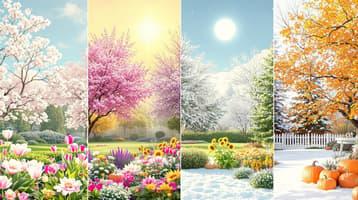
AI Garden Styles for Every Season
Transform your garden throughout the year with tailored seasonal designs and plant recommendations based on local climate conditions.
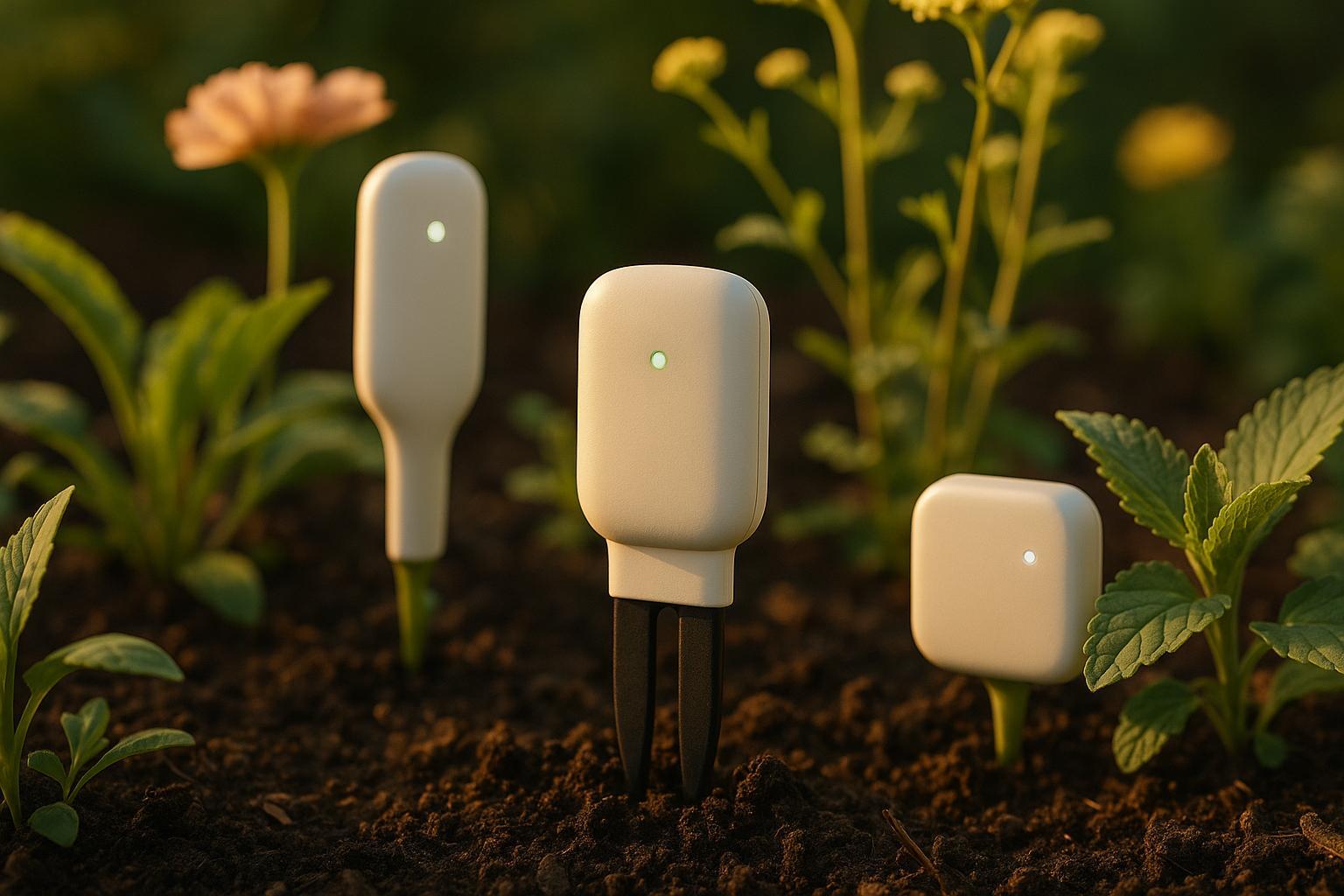
Top 5 Data Compression Methods for IoT Sensors
Explore the top five data compression methods for IoT sensors in garden monitoring systems, enhancing efficiency, performance, and energy savings.
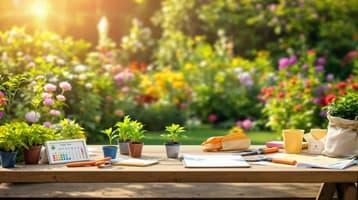
Spring Garden Planning Checklist: Essential Steps for Success
Prepare your garden for spring with essential steps, including soil testing, tool maintenance, and planting schedules for a thriving season.

5 Best Wood Planter Box Kits for Your Home or Office
Looking for an easy and affordable way to add some greenery to your space? Check out our top 5 picks for the best wood planter box kits! Customizable, easy to assemble, durable, environmentally friendly, and affordable.
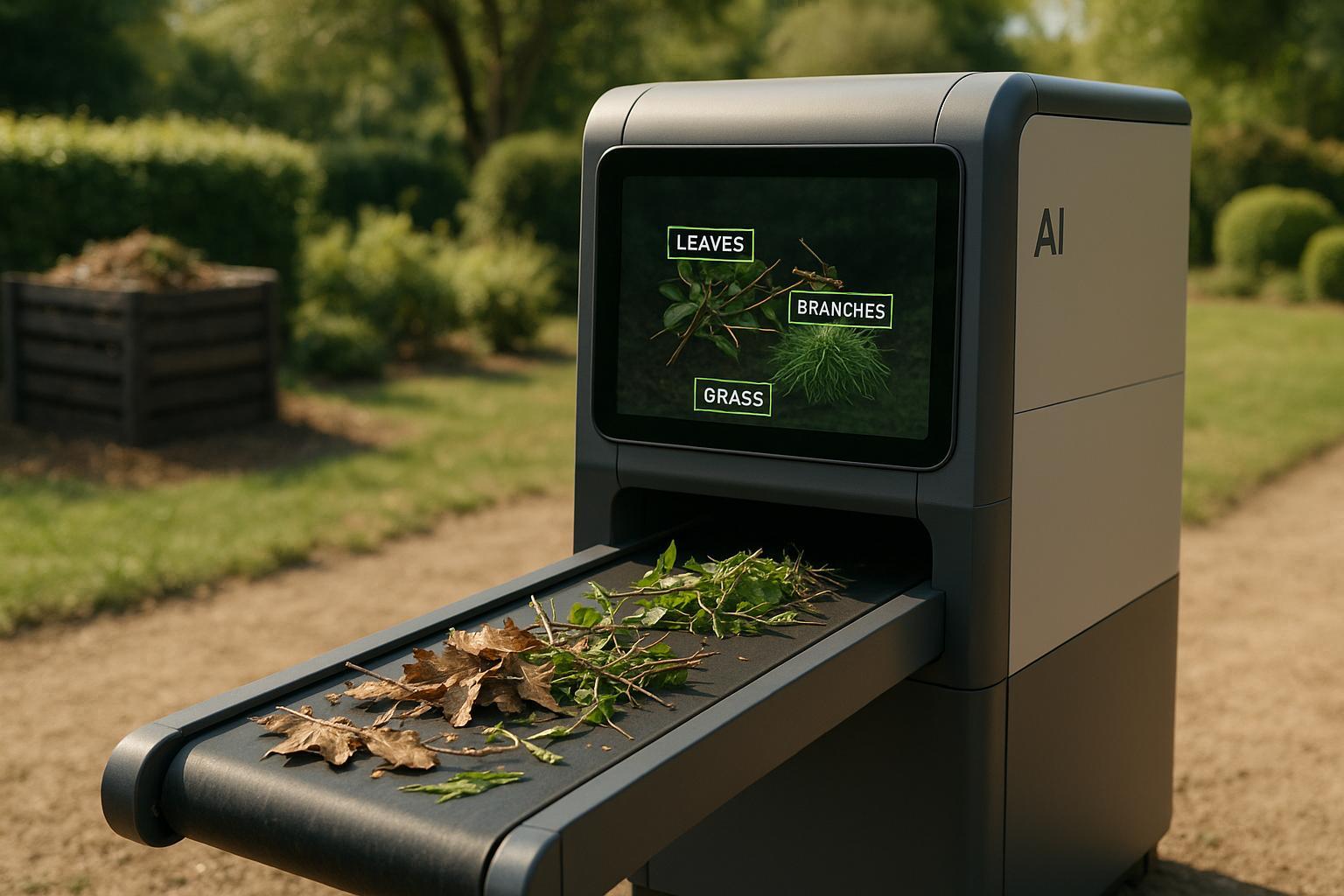
How AI Tracks Garden Waste in Real Time
Explore how AI revolutionizes garden waste management through real-time tracking, smart sorting, and enhanced composting techniques.

AI Tips for Sun and Shade Plant Pairing
Transform your garden with AI tools that simplify sun and shade plant pairing for a thriving mixed-light garden.